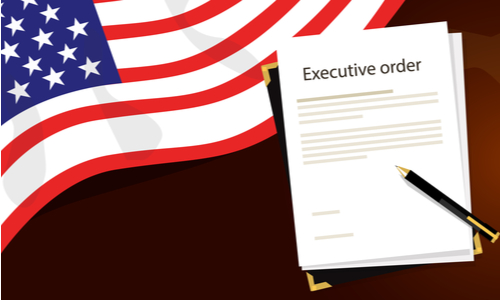Article II, Section 3 of the U.S. Constitution provides that the president shall “take Care that the Laws be faithfully executed.” In reliance on that language, presidents of the United States, beginning with George Washington, have collectively issued thousands of executive orders directing federal agencies to proceed in specified manners. All but one president of the United States (William Henry Harrison) has issued at least one executive order during his tenure in office. Most have issued over a dozen such orders, with Franklin D. Roosevelt issuing the most of any president—a whopping 3,522 executive orders.
These orders have run the gamut from the relatively mundane, such as orders regarding name changes to government-owned facilities, to orders that are extremely socially, politically, and governmentally impactful. Examples of the latter include Abraham Lincoln’s Emancipation Proclamation of 1862, which freed millions of slaves living in the Confederacy, and Franklin D. Roosevelt’s Executive Order 9066, which interned over 100,000 persons of Japanese ancestry in the 1940’s, along with dozens of other orders that have collectively shaped geopolitical history in the United States.
Because executive orders are issued by the President—not Congress—they do not carry the same weight as duly enacted legislation. Each order may be suspended, revoked, or expanded upon by the sitting president, regardless of whether that particular president issued the order. The United States Congress may pass legislation targeted at voiding or altering the order. Federal courts may intervene where a president has exceeded his or her authority under the U.S. Constitution, such as when a president attempts to “create” law, rather than ensure existing law is faithfully executed. The most notable example of this arises in the case Youngstown Sheet & Tube Co. Sawyer, 343 U.S. 579 (1952), in which U.S. Supreme Court voted 6 to 3 to uphold a lower court’s preliminary injunction preventing President Harry S. Truman from nationalizing the steel industry during the Korean War.
For many people, the contours of a majority of these orders may be ignored, without consequence. Lawyers, on the other hand, have an obligation to their clients to identify whether and how such orders may affect the legal advice they give, or the legal action they take on each client’s behalf.
In the administrative compliance context, the effects of executive orders are often clear: an enormous swath of regulatory and government enforcement mechanisms and procedures are frequently and expressly changed by executive orders. In recent years, for example, executive orders have affected environmental review procedures for certain “high-priority” projects (EO 13766); eased certain tax regulations that restrict churches from engaging in political speech (EO 13798); restricted federal agencies from relying on guidance documents in enforcement proceedings (EO 13892); and directed certain federal agencies to ensure that institutions receiving federal research or education grants promote free inquiry (EO 13864).
For litigators, however, the significance of any particular order is more difficult to assess. More often than not, executive orders are of relatively little concern to those suing in court, unless an executive order is itself the subject of the litigation (e.g. recent civil suits aimed at enjoining President Donald J. Trump’s executive orders regarding immigration). This is because executive orders do not create new law, and therefore do not create new rights or legal obligations that a litigant may assert in court.
Nevertheless, a litigator’s understanding of the scope and administrative implications of executive orders may significantly alter that lawyer’s advice or litigation strategy. For example, changes in enforcement procedures under the Tax Code may necessitate or incentivize a differently structured settlement. Or, a president’s proclamation that federal agencies will prioritize the enforcement of certain law violations may necessitate a re-examination of regulatory compliance in the affected areas. Those same proclamations may give rise to tactical considerations as well, including whether the proclamation makes it more likely for a client to achieve success in seeking things like beneficial government intervention, or redress for employment discrimination or civil rights violations.
The practice of presidents issuing dozens, hundreds, and even thousands of executive orders during their time in office is unlikely to change in the foreseeable future. Keeping apprised of these orders is a simple yet effective way for lawyers to ensure not only that their law practice incorporates the current federal regulatory regimes, but also perhaps to provide an extra “edge” needed to achieve client results.
Gregory R. Michael is an associate who handles constitutional civil rights litigation at Dhillon Law Group Inc.

